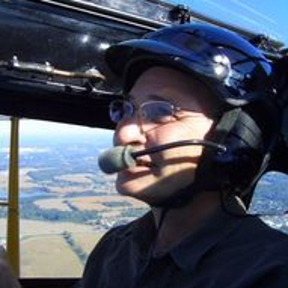Welcome to the Onshape forum! Ask questions and join in the discussions about everything Onshape.
First time visiting? Here are some places to start:- Looking for a certain topic? Check out the categories filter or use Search (upper right).
- Need support? Ask a question to our Community Support category.
- Please submit support tickets for bugs but you can request improvements in the Product Feedback category.
- Be respectful, on topic and if you see a problem, Flag it.
If you would like to contact our Community Manager personally, feel free to send a private message or an email.
How do I get the internal fold marks of a multi-sided shape to show up in the exported flattened DXF
 Spitfire76
Member Posts: 6 ✭✭
Spitfire76
Member Posts: 6 ✭✭
For example if I export the above flattened lofted object only the outline shows up in the DXF even though the lines are there before exporting.
Best Answer
-
 glen_dewsbury
Member Posts: 1,223 PRO
glen_dewsbury
Member Posts: 1,223 PRO
WW1 aircraft were fabric covered and doped. I've done this with a few ultralight aircraft using polyester fabric (Dacron 6 oz/sq yard) and newer ceiler/coatings.
No need to make sheet metal layouts. Drape fabric over frame and glue it down loosely. Trim to suit then carefully shrink taught with a house hold iron. Don't over shrink as it will deform frame.
All you need for your model is a surface to cover frame and thicken. You can use the original flatten displayed above with excess around the edges to be able to grip fabric while placing. I use water born contact adhesive.
Unless you're looking for historically correct don't use linen and dope. Nasty stuff.
0


Answers
did you make it in sheet metal? the sheet metal flattened part (in the tab on the right) allows you to export to dxf with bend-lines…
else try and convert it to sheet metal perhaps…
I did try converting a loft to sheet metal and get this message.
This occurs when using guides to shape a loft. If I remove the guides it works. The flatten feature allows me to flatten a loft with guides but as originally reported it does not export the fold lines.
Sheet metal thicken will to the job.
https://cad.onshape.com/documents/1d35f627efed69ade1b185a2/w/3713e0d14bfcfe62f90cebb8/e/65d8af918e20594eab6d43c2
That works but it fails if you add guides.
It must be because the lines between the 2 loft profiles must be straight. I wonder if it's possible to make one profile of the loft the base and each side bent like a flower with petals. Like this but the petals form the shape above.
I see, Curved guides.
Not sure this is exactly what you're trying to do. The curves being used for guides will make a warped surface and won't convert to sheet metal unless a form tool is provided. That will need the constrained surface and you will have to manually provide bend lines. My sample produces rolled sides that will convert. Like barrel staves. Can you provide a link to your model to better see what is going on?
https://cad.onshape.com/documents/1d35f627efed69ade1b185a2/w/3713e0d14bfcfe62f90cebb8/e/65d8af918e20594eab6d43c2
Thanks for your help and example. I am attempting to create a model of a WW1 plane from copies of the original 1917 drawings of the full scale aircraft. Modern planes typically have a cylindrical fuselage but this one has a polygon shape that tapers from the cockpit to the tail. To complicate things not all parts of the "petals" are equal. I was able to loft the shape using guides but the challenge has been to unfold the shape and export as DXF to be used in a CNC to cut the skin. I now believe that I am trying to be too accurate and think it would be simpler to split the fuselage into several sections with each section a loft without guides.
WW1 aircraft were fabric covered and doped. I've done this with a few ultralight aircraft using polyester fabric (Dacron 6 oz/sq yard) and newer ceiler/coatings.
No need to make sheet metal layouts. Drape fabric over frame and glue it down loosely. Trim to suit then carefully shrink taught with a house hold iron. Don't over shrink as it will deform frame.
All you need for your model is a surface to cover frame and thicken. You can use the original flatten displayed above with excess around the edges to be able to grip fabric while placing. I use water born contact adhesive.
Unless you're looking for historically correct don't use linen and dope. Nasty stuff.